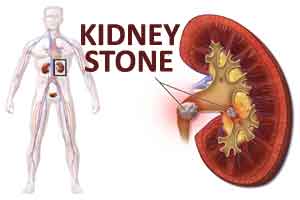- Home
- Editorial
- News
- Practice Guidelines
- Anesthesiology Guidelines
- Cancer Guidelines
- Cardiac Sciences Guidelines
- Critical Care Guidelines
- Dentistry Guidelines
- Dermatology Guidelines
- Diabetes and Endo Guidelines
- Diagnostics Guidelines
- ENT Guidelines
- Featured Practice Guidelines
- Gastroenterology Guidelines
- Geriatrics Guidelines
- Medicine Guidelines
- Nephrology Guidelines
- Neurosciences Guidelines
- Obs and Gynae Guidelines
- Ophthalmology Guidelines
- Orthopaedics Guidelines
- Paediatrics Guidelines
- Psychiatry Guidelines
- Pulmonology Guidelines
- Radiology Guidelines
- Surgery Guidelines
- Urology Guidelines
Break Wave-next-generation lithotripsy with hand held device that uses acoustic energy

USA: The new technology called Break Wave is a next-generation form of lithotripsy that uses cyclic pulses of ultrasound to fracture kidney stones at lower pressures and potentially with little to no anaesthesia is on the anvil.UC San Diego Health has initiated a clinical trial to assess the safety and effectiveness of non-surgical therapy for breaking up kidney stones. For the same, the academic health centre has enrolled its first patient on which the doctors will evaluate an investigational handheld technology that uses acoustic energy for non-invasive fragmentation of painful kidney stones.
The primary goal of the feasibility study is to evaluate whether this new technology can safely and effectively break kidney stones. A secondary goal is to determine if the procedure can be done with minimal or zero anaesthesia and in a non-surgical environment.
According to Mayo Clinic, kidney stones (renal lithiasis, nephrolithiasis) are hard deposits made of minerals and salts that form inside your kidneys. It can have many causes and can affect any part of the urinary tract — from kidneys to bladder. Often, stones form when the urine becomes concentrated, allowing minerals to crystallize and stick together.
This new technology called Break Wave is a next-generation form of lithotripsy that uses cyclic pulses of ultrasound to fracture kidney stones at lower pressures and potentially with little to no anaesthesia.
“Think of an opera singer hitting the right vocal pitch to produce vibrations that stress and break a wine glass,” Roger Sur, urologist and director of the Comprehensive Kidney Stone Center at UC San Diego Health, explains in a press release. “Similar concept. The idea behind this investigational technology is to repeatedly stress certain points in the stone that cause it to fracture into small fragments while avoiding damage to surrounding tissue."
The device was first invented at the University of Washington and San Mateo, California-based SonoMotion is sponsoring its trial at UCSD Health. Sur and providers at other kidney centres plan to enrol 30 patients in the trial, with stones as large as 20 millimetres in diameter.
During the study, participants receive either no anaesthesia, light sedation or general anaesthesia. The Break Wave device is gently applied on the body over the kidney or ureter. Once positioned, the stone is located via real-time ultrasound image guidance and a low amplitude burst of sound waves is emitted to fragment the stones, which are typically composed of hardened calcium oxalate, calcium phosphate, uric acid, or magnesium-ammonium-phosphate.
Traditional non-invasive treatment for kidney stones is called shock wave lithotripsy. This therapy uses high amplitude shock waves to break up stones. Shock wave lithotripsy often requires the use of x-ray imaging to target the stone, anaesthesia, and higher pressures as compared to the Break Wave device. Complications related to these procedures include hematomas, urinary tract injury or obstruction.
“If this study shows that this technology is both safe and effective in fragmenting kidney stones and does so with little to no anaesthesia, it could be a game-changer for patients,” said Sur who performed the world’s first clinical trial procedure. “While watchful waiting is a good approach for the majority of kidney stones, we are in need of more non-invasive technologies that can treat stones without harming other structures."

Disclaimer: This site is primarily intended for healthcare professionals. Any content/information on this website does not replace the advice of medical and/or health professionals and should not be construed as medical/diagnostic advice/endorsement or prescription. Use of this site is subject to our terms of use, privacy policy, advertisement policy. © 2020 Minerva Medical Treatment Pvt Ltd